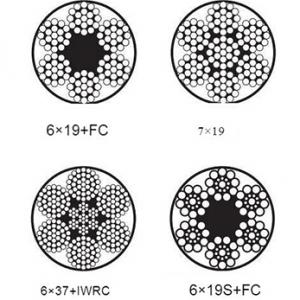Common materials of marine ropes
marine ropes are used for a variety of applications, such as anchoring, mooring, towing, and lifting. Different materials are used to make marine ropes, each with their own advantages and disadvantages. Some common materials of marine ropes are:
Polypropylene: Polypropylene ropes are lightweight and easy to handle. They float in water, which makes them ideal for use as floating lines or water rescue ropes. They are resistant to mildew, rot, and most chemicals, but can weaken in the presence of UV light and are not as strong as other rope materials.
Nylon: Nylon ropes are strong, durable, and stretchy, making them good for mooring and anchoring. They are resistant to abrasion and UV light, and do not absorb water, which helps maintain their strength in wet conditions. However, they can be heavy and difficult to handle, and their stretchiness can make them less precise for some applications.
Polyester: Polyester ropes are strong, durable, and resistant to UV light and abrasion. They do not absorb water, making them a good choice for wet conditions. They are less stretchy than nylon ropes, which can make them more precise for certain applications. However, they can be more expensive than other rope materials.
dyneema: dyneema is a high-strength synthetic fiber that is lightweight, abrasion-resistant, and has a high breaking strength. It is stronger than steel and does not stretch, making it ideal for use in lifting and towing applications. However, it can be more expensive than other rope materials, and is more difficult to splice.
Manila: Manila is a natural fiber rope made from the fibers of the abaca plant. It is strong, durable, and resistant to abrasion. It is also resistant to UV light and does not stretch, making it a good choice for mooring and anchoring. However, it can be susceptible to rot and mildew, and is not as strong as synthetic ropes.
In summary, the advantages and disadvantages of different materials of marine ropes are:
Polypropylene:
Advantages: lightweight, easy to handle, resistant to mildew, rot, and most chemicals, and floats in water.
Disadvantages: weakens in UV light, not as strong as other materials.
Nylon:
Advantages: strong, durable, and stretchy, resistant to abrasion and UV light, and does not absorb water.
Disadvantages: heavy and difficult to handle, less precise for some applications.
Polyester:
Advantages: strong, durable, and resistant to UV light and abrasion, does not absorb water, and less stretchy than nylon.
Disadvantages: more expensive than other materials.
Advantages: high-strength, lightweight, abrasion-resistant, and does not stretch.
Disadvantages: more expensive than other materials, and difficult to splice.
Manila:
Advantages: strong, durable, and resistant to abrasion and UV light, does not stretch.
Disadvantages: susceptible to rot and mildew, and not as strong as synthetic ropes.





